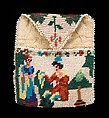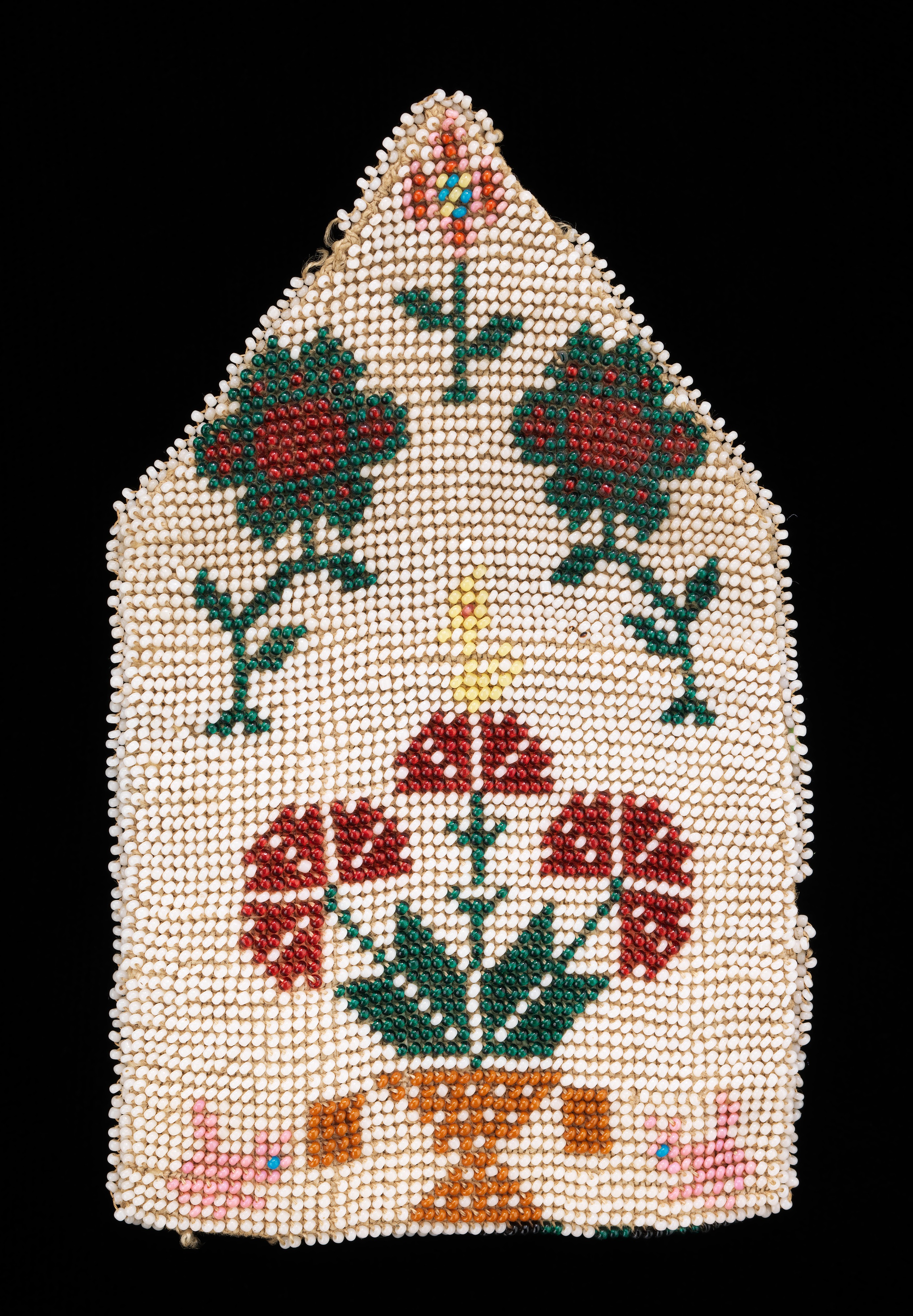Coin purse
Not on view
The two female figures seen here are dressed in fashionable 1830s costume: the seated figure wears a brown dress with puffed sleeves and a feather headdress; the standing figure wears a blue dress and holds a shawl. Although the motifs on the reverse are conventional ones often seen in needlework samplers, the pink animal figures are an idiosyncratic addition. The lining is a dress silk that is consistent with fabrics of the late 1820s to early 1830s. The purse is part of the Mexican beadwork collection of over 600 pieces assembled by Elizabeth Morrow (1873-1955), mother of writer Anne Morrow Lindbergh, the wife of renowned aviator Charles Lindbergh. Morrow collected the objects between 1927 and 1930, when her husband, Dwight Morrow, Sr., served as U.S. ambassador to Mexico. She lent the collection to the Brooklyn Museum in 1938 and upon her death, her children donated it. A collection of 155 pieces of Mexican ceramics and other decorative arts were given to Amherst College, her husband's alma mater.
Mrs. Morrow collected Mexican beadwork, along with other examples of colonial and native arts, to decorate their country home in Cuernavaca in order to promote a more peaceful image of that country through its works. The Morrows sought to overturn the perception of post-revolutionary Mexico as a violent and unstable nation by highlighting the richness and diversity of its colonial, folk, and contemporary art. Glass beads were originally imported to New Spain (Mexico) from Italian and Asian sources via Spanish colonial trade routes. By the early part of the nineteenth century, Spain had suffered the loss of almost all of its colonies and with the succeeding establishment of free trade British ships undertook the importation of beads to Mexico. Many of the design influences on the bags and cases in the collection came from Europe; patterns for beadwork designs came from contemporary fashion publications such as La Dama Elegante.
Due to rights restrictions, this image cannot be enlarged, viewed at full screen, or downloaded.
This artwork is meant to be viewed from right to left. Scroll left to view more.



